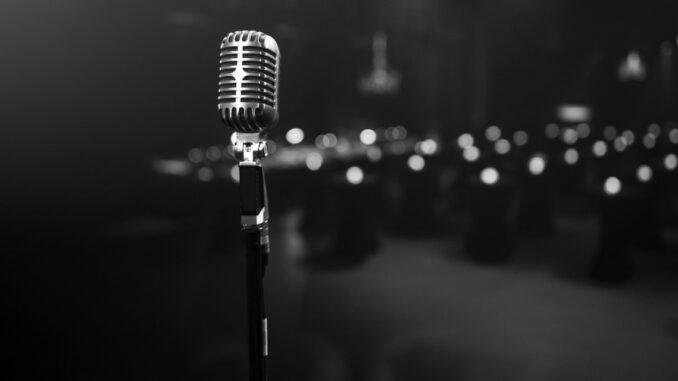
What Makes a Song R&B?
Rhythm and Blues, commonly known as R&B, is one of the most influential genres of music. Originating in the 1940s, R&B song has evolved through different eras, incorporating elements from jazz, blues, gospel, soul, funk, and hip-hop. Today, R&B continues to shape modern music with its signature smooth melodies, deep grooves, and emotional vocal delivery.
But what makes a song R&B? This article explores the key characteristics of R&B music, including its history, vocal techniques, instrumentation, lyrical themes, and production style.
The Origins of R&B Song
R&B emerged from African American communities in the United States in the late 1940s as a fusion of blues and jazz. Early R&B was driven by strong rhythms, electrified instruments, and emotional storytelling. Artists like Ray Charles, Sam Cooke, and Etta James helped establish the genre’s foundations.
Over the decades, R&B song has expanded to include subgenres like contemporary R&B, neo-soul, and alternative R&B, making it one of the most versatile styles of music today.
Key Characteristics of R&B Song
1. Vocal Delivery and Melodic Phrasing
One of the defining features of R&B music is its expressive and soulful vocal performance. R&B singers often use vocal runs, melisma (stretching syllables across multiple notes), and vibrato to convey deep emotions. This technique can be heard in artists like Mariah Carey, Whitney Houston, and Luther Vandross.
R&B melodies are usually smooth and flowing, emphasizing sensuality and emotional depth. Unlike pop music, which tends to have straightforward vocal lines, R&B vocals often include improvisation and embellishments that add richness to the performance.
2. Rhythmic Groove and Syncopation
R&B is heavily rhythm-driven, with syncopation playing a crucial role. Syncopation refers to placing rhythmic accents on unexpected beats, creating a groove that feels natural yet compelling. This rhythmic complexity is a key element that differentiates R&B from other genres like pop and rock.
Many R&B songs feature a laid-back yet steady groove, often influenced by funk and hip-hop. The use of swung rhythms and syncopated beats makes R&B music feel fluid and dynamic.
3. Instrumentation and Production Techniques
R&B instrumentation has evolved over time, but certain elements remain consistent:
Basslines: A strong, groovy bassline is essential in R&B, providing the foundation of the song’s rhythm. Bass guitars or synthesizers are commonly used.
Drums and Percussion: R&B often uses a blend of live and electronic drum sounds. The kick drum and snare pattern play a key role in defining the groove.
Piano and Keyboards: Many R&B tracks incorporate piano chords or electric keyboard sounds to create warmth and depth.
Guitar: Smooth, clean guitar tones or funky riffs often enhance the harmonic structure.
Synths and Electronic Sounds: Modern R&B frequently incorporates synth pads, electronic effects, and programmed beats, adding a contemporary feel to the genre.
Producers like Timbaland, Pharrell Williams, and Babyface have played a significant role in shaping the sound of R&B by using innovative production techniques such as layered harmonies, digital effects, and sampling.
4. Lyrical Themes in R&B Song
The lyrics of R&B songs often explore themes of love, relationships, heartbreak, personal struggles, and empowerment. Unlike hip-hop, which often focuses on storytelling and wordplay, R&B lyrics prioritize emotional expression and vulnerability.
Common R&B themes include:
Romantic love and intimacy (e.g., “Let’s Get It On” by Marvin Gaye)
Heartbreak and longing (e.g., “Un-break My Heart” by Toni Braxton)
Self-reflection and personal growth (e.g., “Superwoman” by Alicia Keys)
Social issues and empowerments (e.g., “Respect” by Aretha Franklin)
5. Harmonies and Background Vocals
R&B is known for its rich harmonies and background vocal arrangements. Many R&B songs feature layered harmonies that add texture and depth to the sound. Artists like Boyz II Men, Destiny’s Child, and The Weeknd use intricate vocal layering to create lush sonic landscapes.
Call-and-response singing, a technique rooted in gospel music, is also commonly used in R&B, allowing for dynamic interaction between lead and background vocals.
6. Influence from Other Genres
R&B has always been a genre that embraces influences from other musical styles. Over the years, R&B has merged with various genres, giving birth to new subgenres:
Neo-Soul: A fusion of classic soul, jazz, and contemporary R&B, popularized by artists like Erykah Badu and D’Angelo.
Hip-Hop Soul: A blend of R&B and hip-hop elements, pioneered by Mary J. Blige and Jodeci.
Alternative R&B: A modern, experimental take on R&B that includes electronic and indie influences, seen in artists like Frank Ocean and SZA.
Modern R&B: Evolution and Trends
In the 21st century, R&B continues to evolve, incorporating digital production techniques and blending with genres like trap, house, and electronic music. Artists like Beyoncé, Chris Brown, and Summer Walker push the boundaries of R&B while maintaining its core elements.
Streaming platforms and social media have also reshaped R&B, allowing independent artists to gain recognition without traditional label support. This has led to the rise of underground and international R&B artists who bring fresh perspectives to the genre.
Conclusion
R&B is a genre defined by its emotive vocals, groovy rhythms, lush harmonies, and rich storytelling. Whether it’s the classic sounds of Motown or the futuristic beats of modern alternative R&B, the genre continues to captivate listeners worldwide.
Understanding what makes a song R&B requires looking at its history, musical elements, and cultural impact. From the soulful melodies of the past to the genre-blending hits of today, R&B remains one of the most dynamic and enduring styles of music.
By analyzing the key characteristics discussed in this article, musicians, producers, and fans can gain a deeper appreciation for the artistry behind R&B music. Whether you’re an aspiring artist or a dedicated listener, R&B’s emotional depth and rhythmic allure make it a genre worth celebrating.
Stay updated with more information here!
Watch music videos here.
Leave a Reply